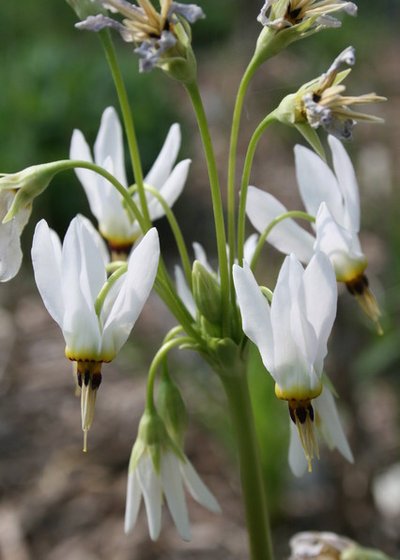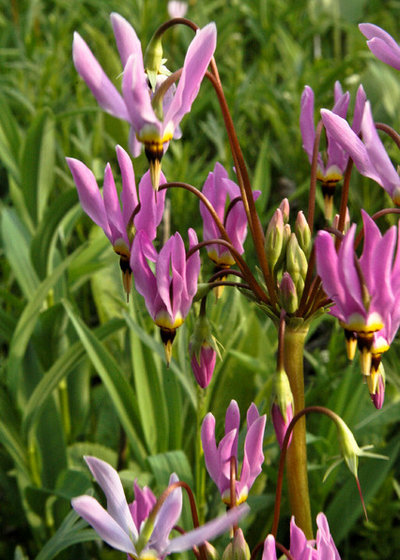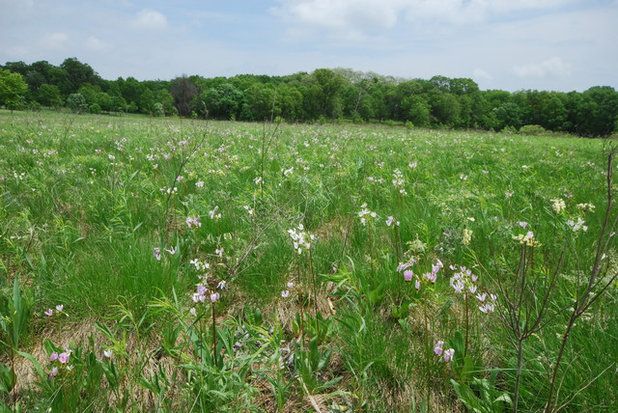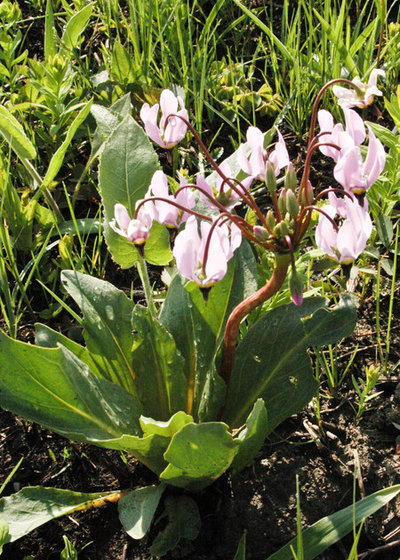Specialty nurseries, whether online or at a local farmer’s market, offer opportunities to discover unique native plants. Take shooting star (
Dodecatheon meadia), whose arching stems bear gorgeous, dangling blooms reminiscent of Dutchman’s breeches (
Dicentra cucullaria). This perennial goes dormant by midsummer, when the extreme heat arrives, so it’s perfect to tuck among other low-growing plants or late-to-rise summer perennials.

Benjamin Vogt / Monarch Gardens
Botanical name: Dodecatheon meadiaCommon names: Shooting star, midland shooting star, prairie pointers, eastern shooting star, pride of Ohio, roosterheads
Origin: Native from southeast Minnesota to northeast Texas, east to New York and down into Florida
Where it will grow: Hardy to -30 degrees Fahrenheit (USDA zones 4 to 8; find your zone)
Water requirement: Somewhat dry to somewhat moist soil
Light requirement: Full sun to 50 percent shade
Mature size: About 1 foot tall and wide
Benefits and tolerances: Fairly adaptable but prefers a consistently moist soil
Seasonal interest: Unique blooms vary in color; goes dormant by midsummer
When to plant: Potted or bare-root plants can be put in from late spring to late fall; sow seeds in late fall through winter.

Frank Mayfield
Distinguishing traits. The flowers range from white to dusky purple to a dark pink, depending on the individual plants. Bumblebees and a few other native bees species are the most common pollinators, so it’s an important pollen source for these spring-emerging insects. This perennial is a prairie ephemeral, meaning it blooms in spring but goes dormant in summer, so don’t freak out when its foliage vanishes after the rains stop and the heat comes on.
See how to design a garden for native bees
 How to use it.
How to use it. In the wild you might see shooting star in a loamy open prairie, near a depression where water collects or on a slope with some rocky material in the soil.
It’s definitely a front-of-the-border plant, given its low stature and and airy nature, but it could look good in a short garden bed composed of native sedges like plains oval sedge (
Carex brevior) or grasses like sideoats grama (
Bouteloua curtipendula) and prairie dropseed (
Sporobolus heterolepis).
Generally, clay to loam to slightly sandy conditions will work, with the former needing less water and the latter requiring more.

Frank Mayfield
Planting notes. Since shooting star goes dormant by midsummer, when drier conditions come along, it’s probably best to plant it in spring, so you can see it and know where it might look best. However, bare-root plants in fall work, too. If sowing, keep in mind that the seeds are very small and need light to germinate (as well as cold, wet weather), so just broadcast them on the soil surface after a few hard freezes in fall or on top of the snow in winter.
Tell us: Do you grow shooting star? What do you think of it?
More: Browse plants native to other regions of the U.S.
What to do in your garden in spring





